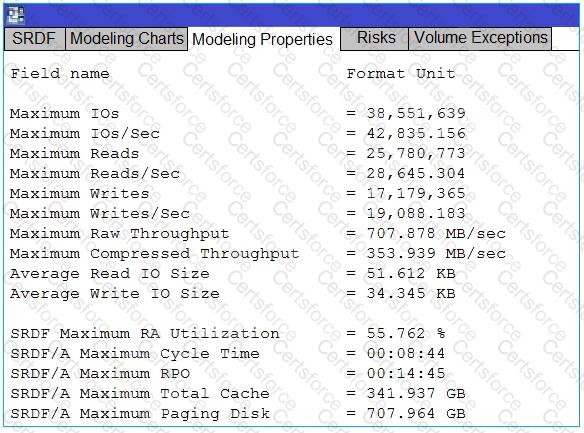A customer is planning to purchase a PowerMax 8000 system with the zEssentials software package. The environment needs to have the ability to rapidly recover from large scale logical corruption using TimeFinder SnapVX.
Which optional software should be recommended to fulfill the requirement?
A customer is planning to implement SRDF/Metro, using the default Device Bias method. What is a consideration?
A PowerMax Storage Group has Host I/O limits set at 10000 IOPS. The Port Group contains four ports across different directors. The Dynamic Distribution is set to OnFailure.
What is the maximum IOPS the Storage Group can achieve in the event a switch port being used by one of the director ports fails but the director remains online?
When implementing SRDF/Metro with Array Witness, what is a requirement of the witness array?
An architect plans to implement SRDF/A Legacy mode. What is a possible reason to do this?
What is a Composite Group in BCSD?
Refer to the exhibit.

An SRDF/A solution with BCSD is designed and the results are shown in the exhibit. A customer requirement was a five-minute RPO. In the exhibit shown, the RPO is above the customer requirement.
How can the five-minute RPO requirement be met?
What is the default data collection interval for TTP collections?
Which legacy modes are supported in TimeFinder SnapVX?
Refer to the exhibit.

This performance data is an example of what of output?